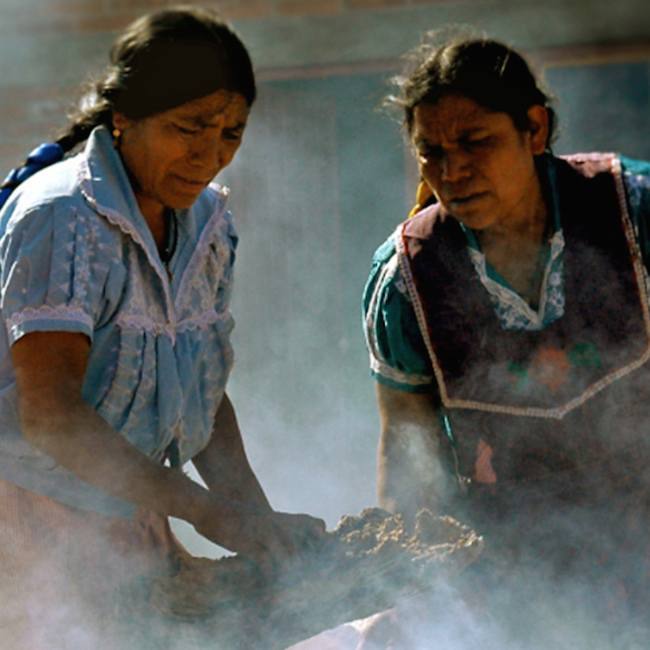OAXACA, MEXCIO — A little over two years ago we ran an article on a series of “sinkhole vessels” by Liliana Ovalle and Colectivo 1050°. They’re great pieces of work with fascinating shapes, a dark finish, and a taste of unease from the natural phenomenon they draw their inspiration from. We ran a video showing how such vessels are fired and it’s worth a watch if you haven’t seen it yet.
Cool Hunting recently ran a piece on Kythzia Barrera, an industrial designer who founded the NGO Innovando la Tradición (Innovating Tradition), of which Colectivo 1050° is the retail arm. We often talk in absolutes about the epoch-spanning force that is humankind and clay, but Barrera fears that the pottery traditions in Oaxaca are on their way out. As might be guessed, it’s a problem of modernity coupled with economics. It’s difficult to make a living as a potter, and so traditions that took more than 3,000 years to develop are slouching toward extinction. Barrera talks about this realization, saying she had an apocalyptic vision while walking through an artist market.
While some objects there astonished her for their beauty and superb functionality, she was also horrified by “nonsense objects that didn’t have any logic for the context in which they were created—like SpongeBob, [ceramic] tits on a cup or decorations of flowers that were not originally from the area. Symbolism was completely trashed and functional wisdom was gone.” The shock inspired her to talk with the village artisans and spend time at the library gathering as much information as possible about the history and origin of Oaxacan crafts.
Barrera answers modernity and economics with the two branches of her program. 1050° responds to the economic question of how to make the tradition thrive and Innovando la Tradición responds to the modernity/social aspect. Tradition is nurtured by collecting a group of potters into one place, where they can socialize, hone their craft and teach techniques to others through workshops. From Innovando:
Our goal is to elevate the symbolic, cultural and commercial value of pottery in the world of today. We foster innovation through experimental workshops and technical training, we search for sustainable technological changes and promote pottery through a variety of means.
It’s a fascinating model of how a socially-conscious art collective can function and we suggest you give their pages a look. The work certainly lives up to its ideals.
What do you think of this (not quite) contemporary ceramic art? let us know in the comments.





Vaidava ceramics in Latvia still makes traditional earthenware ceramics.
http://vaidava.lv/lv/
Shall visit the Place and factory coming summer and I am very happy for this possibility.